Examining the Patient
The rash

Most patients with meningococcal septicaemia develop a rash 7 24 25 26 - it is one of the clearest and most important signs to recognise. A rapidly evolving petechial or purpuric rash is a marker of very severe disease.
Early stages
In the early stages the rash may be blanching and macular or maculopapular 24 27 (sometimes confused with flea bites), but it nearly always develops into a non-blanching red, purple or brownish petechial rash or purpura.

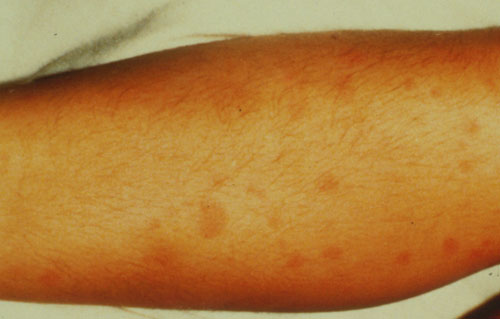
Macular rash
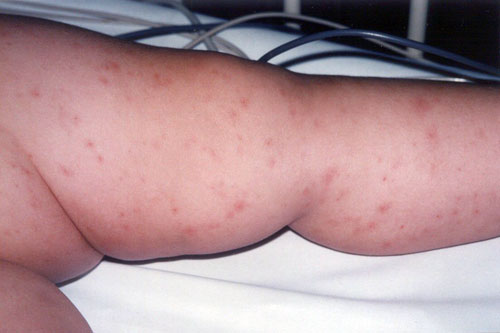

Maculopapular rash in meningococcal septicaemia
Isolated pin-prick spots may appear where the rash is mainly maculopapular 24, so it is important to search the whole body for small petechiae, especially in a febrile child with no focal cause.
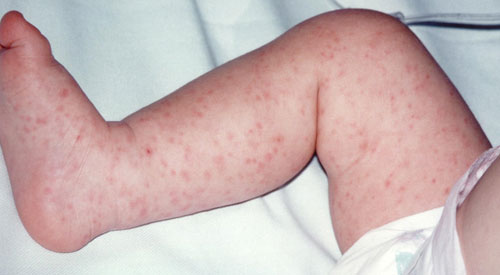

Maculopapular rash with scanty petechiae

Rash in 'meningitis'
In meningitis the rash can be scanty, blanching (macular or maculopapular), atypical or even absent.

Very scanty rash: just 3 petechiae on abdomen (2) and chest (1)*

A few petechiae on mottled skin
Spectrum of meningococcal rashes
Meningococcal rashes can be extremely diverse, and look different on different skin types. The rate of progression can also vary greatly.
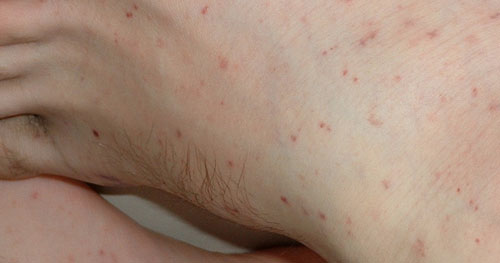
Petechial rash*

Mixed petechial/ purpuric rash

Mixed petechial/purpuric rash* on freckled skin

Sparse purpuric rash*

![]()
Full-blown purpuric rash of septicaemia

Widespread purpuric rash of septicaemia

Atypical purpuric marks*

Atypical purpuric spots can resemble insect bites

Purple blotches may be larger, resembling bruises*
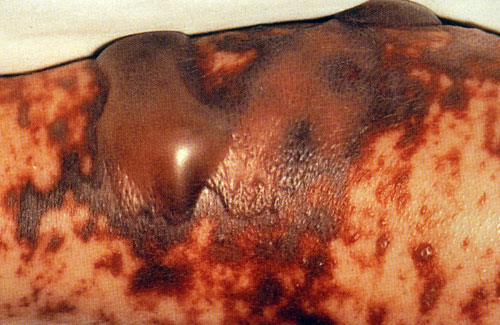
Purpuric blotches of septicaemic rash can resemble blood blisters
Spotting the rash on dark skin
The rash can be more difficult to see on dark skin,
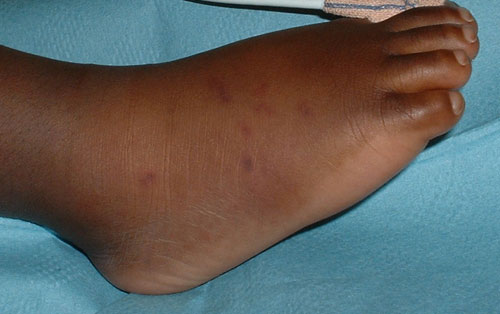
Meningococcal rash on dark skin*
but may be visible in paler areas, especially the soles of the feet, palms of the hands, abdomen, or on the conjunctivae or palate.
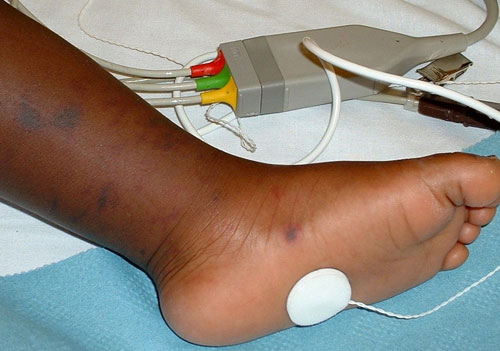
Purpuric rash on dark skin - easier to see on sole of foot*
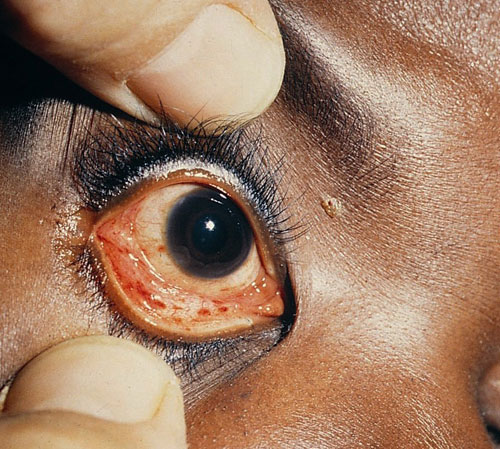

Petechial rash on conjunctivae
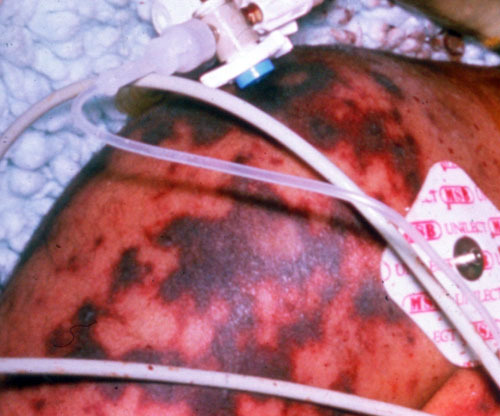
Widespread purpuric rash on dark skin^
Advanced Rash


Purpuric areas that look like bruises can be confused with injury or abuse.
Extensive purpuric areas often over the feet, legs and hands are usually called 'purpura fulminans'.
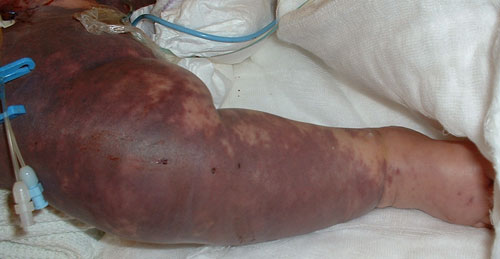
Purpura fulminans*
Although some of the causes of petechial rashes are self-limiting conditions, many others, including MD are fulminant or life-threatening, and a non-blanching rash should therefore be treated as an emergency5 19.
It is crucial to remember that the underlying meningitis or septicaemia may be very advanced by the time a rash appears. The rapidly evolving haemorrhagic 'text book' rash may be a very late sign, it may be too late to save the child's life by the time this rash is seen. It is very important to examine children for the signs of meningitis or septicaemia (and raised ICP or shock) and investigate and treat if necessary based on those findings.